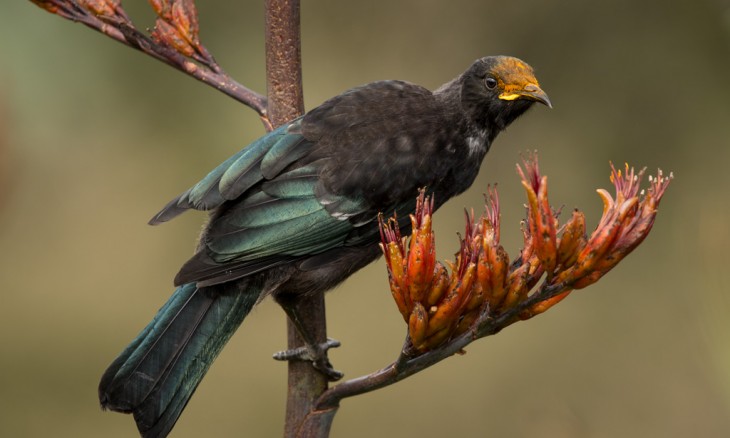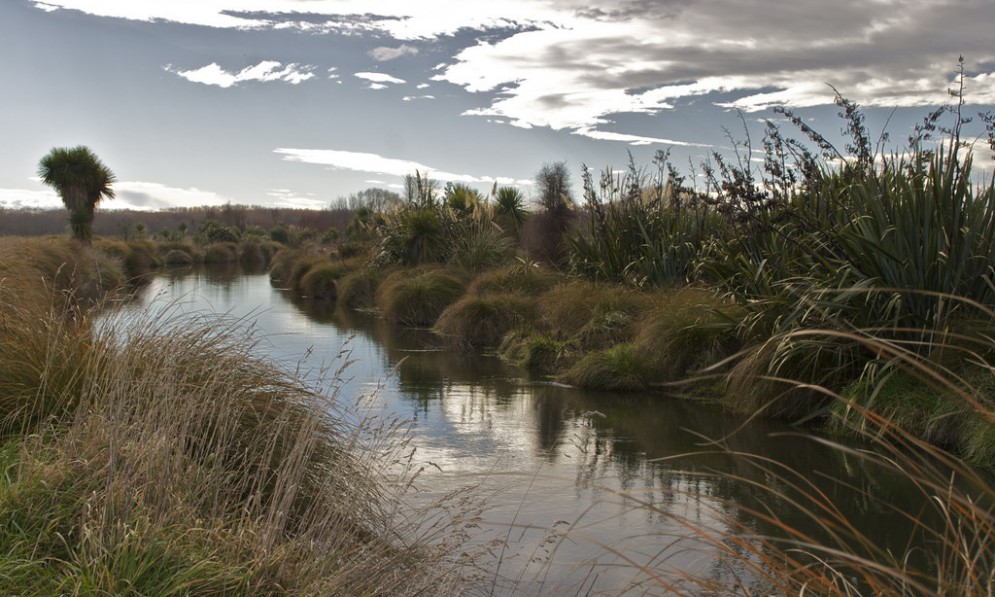Create a wetland in your backyard, and you’ll quickly become popular with your feathered friends.

Harakeke (flax) is a common wetland plant because it is able to survive in saturated conditions. Credit: Craig McKenzie
Protecting, restoring or even creating a wetland can involve quite a lot of work initially, but once established, it will pretty much take care of itself – and add significant aesthetic and environmental values to your property.
The first step is to ensure water levels are maintained. Obviously, a wetland is by definition wet (although water levels in many wetlands naturally fluctuate dramatically between seasons). Observe your water source over a range of seasons – if water levels aren’t sufficient to keep your wetland relatively wet year-round, you may need to build a low stopbank or dam or dig out an area to create a depression.
If doing so will raise water levels on neighbouring properties, or if the water will be deeper than 1.5 metres or covers more than a hectare you will need to get resource consent. Many native fish species also need to travel from wetlands to the sea to breed, so make sure any earthworks don’t bock their access.

Harts Creek near Lake Ellesmere. Credit: Steve Attwood
Next, you will need to draw up a planting plan. Divide your wetland area into three planting zones: moist soils surrounding the wetland, boggy ground with temporary flooding, and standing water.
In the moist soil zone choose trees and shrubs that can tolerate damp conditions but can still survive when the soil gets a bit drier in summer (for example, matai, whiteywood, putaputaweta/marble-leaf, kahikatea, swamp maire).
For the boggy/temporary flooding zone select native sedges, lilies, rushes, grasses, shrubs and trees that can cope with these permanently moist (and sometimes completely saturated) conditions (for example, harakeke/NZ flax, wire rush, swamp coprosma). In the standing water zone you will need water plants such as raupo and jointed twig rush.
As well as choosing plants that are appropriate for moisture levels, you will need to make sure they can also cope with other factors and conditions in your area, such as wind, frost and sun. Ideally, the plants will be “eco-sourced” from local sources of cuttings or seeds – these plants will be most likely to thrive in local conditions and planting them will also help maintain local biodiversity.
Local native plant nurseries, your regional council or local Forest & Bird branch can give advice on which plants are best suited to your area and are naturally found there, or you might be able to grow plants yourself from seeds and cuttings from neighbouring wetlands.
In summer, while water levels are lowest, plant suitable species right up to the water’s edge – other areas should be planted at wetter times of the year so there will be less risk that could dry out before they are well established. Plant smaller plants such as ferns and small sedges three per square metre, but larger plants will need 1-1.5sqm each. Plant tough, fast-growing “nursery” species such as flax and manuka first so they can provide shelter for more delicate plants later.
You will need to keep plants clear of weeds for the first 2-3 years – the most common cause of “casualties” among new plantings is smothering with long grass. After a few years, the plants should be big enough to crowd out weeds – meaning less work for you. In areas that don’t get flooded, 10-centimetre-deep mulch will help deter weeds and conserve moisture.
Herbicides should be used sparingly in wetland areas as chemicals can spread rapidly along waterways and kill vulnerable native plants and animals. Weeds can be removed by hand or using a grubber, but careful herbicide application may be needed to tackle some tougher invaders such as willows. Regional council or Weedbusters are good sources of information on getting rid of wetland weeds.
Wetlands that get too much sun and nutrient run-off can also be clogged with algae and water weeds. Putting barley straw in the water (two bales per hectare) inhibits algal growth, and overhanging trees and plantings that shade the water also help.
Keeping stock out of your wetland is critical. Stock – particularly cattle – will pug and compact the soil, eat and trample native plants, contaminate the water with faeces and urine, raise nutrient levels, disturb native animals and introduce weeds.
It is important to fence off wetlands from stock and keep stock off boggy pasture near wetlands in winter and wet periods.
Introduced pests including possums, rabbits, hares, ferrets, stoats, feral cats and rats will prey on wetland birds and/or eat wetlands plants, so pest control (either trapping or poisoning) may be necessary.
The bigger and more diverse your wetland, the more diverse the birdlife that it attracts will be. To encourage birds to live and breed in your wetland create gently sloping edges and an irregular shoreline that allows birds easy access to the water and extends the length of the margin of reeds and sedges around the water.
Logs and trees will provide perching and nesting sites for birds, and islands or floating rafts with plants growing on top will provide safe nesting sites. Planting native species that provide sources of nectar, fruit and seeds will also ensure a healthy bird population in and around your wetland.
